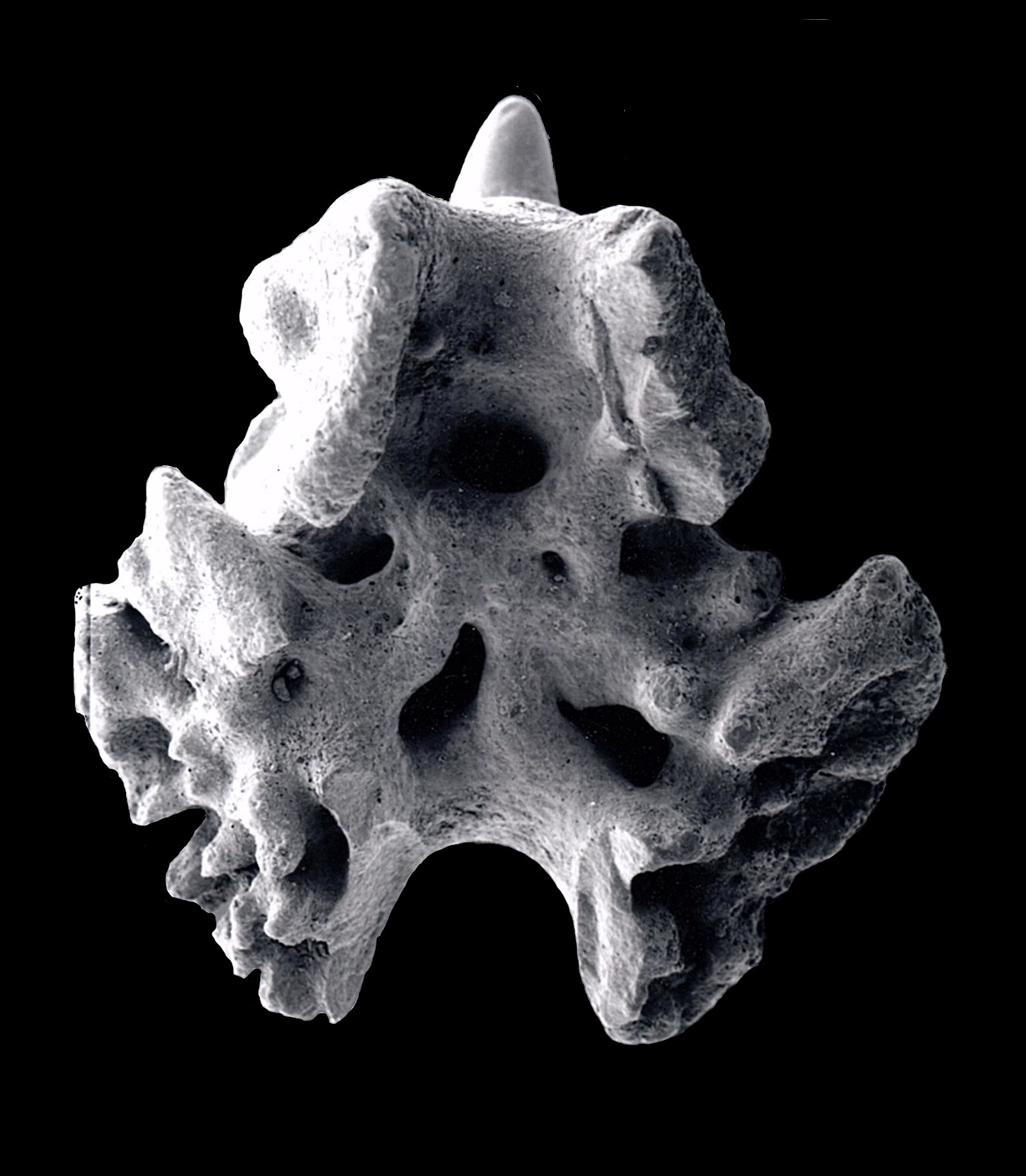Tomewingia problematica
(Case & Cappetta, 1997)
Classification: Elasmobranchii Rajiformes incert. fam.
Reference of the original description
A new selachian fauna from the Late Maastrichtian of Texas (Upper Cretaceous/Navarro Group; Kemp Formation). Münchner Geowissenschaftliche Abhandlungen Reihe A, Geologie und Paläontologie, 34, 131–189, 10 fig., 15 pl.
A new selachian fauna from the Late Maastrichtian of Texas (Upper Cretaceous/Navarro Group; Kemp Formation). Münchner Geowissenschaftliche Abhandlungen Reihe A, Geologie und Paläontologie, 34, 131–189, 10 fig., 15 pl.
Synonyms / new combinations and misspellings
Ewingia cf. problematica, Ewingia problematica
Ewingia cf. problematica, Ewingia problematica
Types
Tomewingia problematica
Holotype: AMNH(fossil): 12174; Paratype: AMNH(fossil): 12200a; AMNH(fossil): 12200b;
Tomewingia problematica
Holotype: AMNH(fossil): 12174; Paratype: AMNH(fossil): 12200a; AMNH(fossil): 12200b;
Description:
Citation: Tomewingia problematica (Case & Cappetta, 1997): In: Database of fossil elasmobranch teeth www.shark-references.com, World Wide Web electronic publication, Version 01/2026
Please send your images of "Tomewingia problematica" to info@shark-references.com

Tomewingia problematica (Case & Cappetta, 1997); tooth (AMNH 12200a), basal view, paratype © G. Case

Tomewingia problematica (Case & Cappetta, 1997); tooth (AMNH 12200a), basal view, paratype © G. Case
Distribution Geographic
South Sulphur River, near Commerce, Hunt County, Texas [401]; Meade County, South Dakota [164]; Bowie, Prince Georges County, Maryland [5758]
South Sulphur River, near Commerce, Hunt County, Texas [401]; Meade County, South Dakota [164]; Bowie, Prince Georges County, Maryland [5758]
Distribution Stratigraphy
Late Maastrichtian (Navarroan), Kemp Clay Formation [401]; Fox Hills Formation (Maastrichtian) [164]; Severn Formation, early Maastrichtian (Late Cretaceous) [5758]
Late Maastrichtian (Navarroan), Kemp Clay Formation [401]; Fox Hills Formation (Maastrichtian) [164]; Severn Formation, early Maastrichtian (Late Cretaceous) [5758]
Description
Diagnosis after CASE & CAPPETTA, 1997 [401]: Teeth of very peculiar design with a root higher and broader than the crown (teeth up to 2mm in total height). Crown less high, with a triangular labial face in occlusal view and well cuspidate; cusp more or less sharp according to the position in the mouth and strongly bent lingually. Base of the labial face bearing some strong folds, with sometimes an axial crest. Root high, often multilobate in occlusal view. Root lobes separated by a deep and broad groove where open large and irregular foramina. Usually several pairs of margino-lingual foramina very well developed opening close to the base of the root and sometimes strongly indenting the basal outline. Numerous and irregular foramina open also on the basal face of root lobes.
Diagnosis after CASE & CAPPETTA, 1997 [401]: Teeth of very peculiar design with a root higher and broader than the crown (teeth up to 2mm in total height). Crown less high, with a triangular labial face in occlusal view and well cuspidate; cusp more or less sharp according to the position in the mouth and strongly bent lingually. Base of the labial face bearing some strong folds, with sometimes an axial crest. Root high, often multilobate in occlusal view. Root lobes separated by a deep and broad groove where open large and irregular foramina. Usually several pairs of margino-lingual foramina very well developed opening close to the base of the root and sometimes strongly indenting the basal outline. Numerous and irregular foramina open also on the basal face of root lobes.
Remarks
shark-references Species-ID=13362;
shark-references Species-ID=13362;
References

Global impact and selectivity of the Cretaceous-Paleogene mass extinction among sharks, skates, and rays. Science, 379, 802–806
DOI: 10.1126/science.abn2080

Ewingia Case & Cappetta, 1997 (Chondrichthyes: Rajiformes), preoccupied by Ewingia pearse, 1929 (Insecta: Arachnida). Neues Jahrbuch für Geologie und Paläontologie, Abhandlungen, 268(1), 125–126
DOI: 10.1127/0077-7749/2013/0320

Chondrichthyans from the Fairpoint Member of the Fox Hills Formation (Maastrichtian), Meade County, South Dakota. Journal of Vertebrate Paleontology, 24(4), 780–793
DOI: 10.1671/0272-4634(2004)024[0780:CFTFMO]2.0.CO;2
A late Cretaceous (Severn Formation) Vertebrate Assemblage from Bowie Maryland. The Mosasaur, 6, 17–24

A new selachian fauna from the Late Maastrichtian of Texas (Upper Cretaceous/Navarro Group; Kemp Formation). Münchner Geowissenschaftliche Abhandlungen Reihe A, Geologie und Paläontologie, 34, 131–189, 10 fig., 15 pl.

Global impact and selectivity of the Cretaceous-Paleogene mass extinction among sharks, skates, and rays. Science, 379, 802–806
DOI: 10.1126/science.abn2080

Ewingia Case & Cappetta, 1997 (Chondrichthyes: Rajiformes), preoccupied by Ewingia pearse, 1929 (Insecta: Arachnida). Neues Jahrbuch für Geologie und Paläontologie, Abhandlungen, 268(1), 125–126
DOI: 10.1127/0077-7749/2013/0320

Chondrichthyans from the Fairpoint Member of the Fox Hills Formation (Maastrichtian), Meade County, South Dakota. Journal of Vertebrate Paleontology, 24(4), 780–793
DOI: 10.1671/0272-4634(2004)024[0780:CFTFMO]2.0.CO;2
A late Cretaceous (Severn Formation) Vertebrate Assemblage from Bowie Maryland. The Mosasaur, 6, 17–24

A new selachian fauna from the Late Maastrichtian of Texas (Upper Cretaceous/Navarro Group; Kemp Formation). Münchner Geowissenschaftliche Abhandlungen Reihe A, Geologie und Paläontologie, 34, 131–189, 10 fig., 15 pl.

















